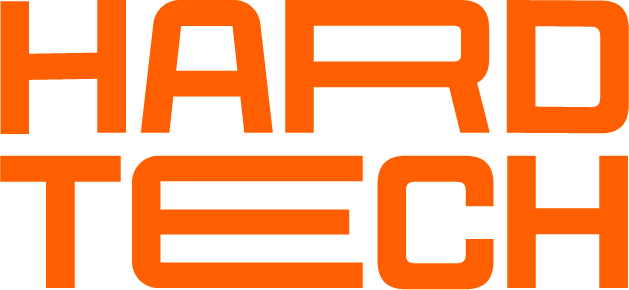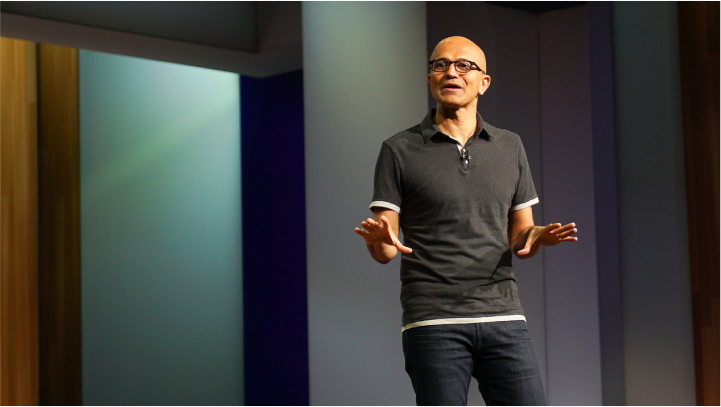
The Hardtech studio at Rally represents companies innovating within manufacturing, industry 4.0 and cleantech, to produce hard goods, soft goods, advanced materials, new processes, and sensors.
When thought leaders and forecasters today talk about how the world will solve critical issues like climate change, supply chain volatilty and food insecurity, hardtech is at the heart of their conversations.
Plus, investment leaders expect hardtech companies to lead the next class of IPOs in technology. And others predict that “camels” — startups that can adapt to multiple climates, survive without sustenance for months, and withstand harsh conditions — are best positioned to deliver strong returns in the near future. (Hardtech is built to be resilient.)
While hardtech founders are often signing up for substantial challenges around the cost to develop an MVP, and acquiring the necessary capital to build and scale, there are also advantages. Intellectual property laws protect hardtech from being copied and duplicated like software can be. Join us for more inside the Rally Hardtech studio.
With attendance expected to exceed 5,000 attendees, Rally will feature a diverse mix of activities, including Keynote addresses from industry leaders, innovators, and visionaries, curated 1:1 investor meetups, a demo arena, and up to a $1,000,000 pitch competition.
Connections with others working on similar projects can lead to great collaborations that push an industry forward. Whether finding a mentor or mentee, a great fit for your next hire, or another company for a collaborative relationship, real connections forged at conferences make a difference.
Featured speakers, panels, and presentations from leaders in innovation in your field can add to your knowledge base. With a cross-sector conference, learning about technological breakthroughs outside your industry means you get even more fuel for to drive breakthroughs of your own.
Even the most dedicated founder can’t keep up with every new thing coming down the pipeline in their industry. There will always be someone doing something you haven’t heard about, and conferences are a great way to get caught up on the biggest innovations you’ve missed.
Chief Operating Officer
Elevate Ventures
CEO, Managing Partner
Bohu Digital
Chairman and CEO
Microsoft
Chief Executive Officer
Elevate Ventures


Since the industrial revolution, companies have constantly been in search of the next big innovation to transform and modernize their operations.
There are many different ways for these companies to stay in the loop, from subscribing to industry newsletters to online networking or even attending professional conferences. Their search for innovative new ideas, continuous improvement, and growth strategies fuel these pursuits. That being said, not all companies are the same, and all professional conferences are definitely not created equally.
If you’re in manufacturing—or a manufacturing-related industry—you certainly have options. This article is going to take a deep dive into advanced manufacturing conferences, including a one-of-a-kind cross-sector innovation conference.
We’ll start by exploring some of the advancements that have transformed traditional manufacturing processes, creating advanced manufacturing as we know it today. Then, we’ll help you find the best conference options to power your company to be competitive, innovative, and well-rounded in your knowledge. Finally, we’ll introduce the upcoming Rally conference, which takes a cross-sector approach to innovation, where you’ll find the intersection of manufacturing’s present and future.
Traditional manufacturing commonly refers to the use of labor, tools, machinery, and even chemical processing to convert raw materials or components into finished goods. Through the use of large-scale manufacturing systems, businesses can mass produce their goods in a cost-efficient manner.
Ultimately, a traditional manufacturing system creates consistent, repeatable processes for converting raw materials into finished products. They enable companies to save money through “economy of scale”—the correlation between increasing production levels and reducing overall costs, in other words.
There are as many as six distinct traditional manufacturing processes, including:
Additive manufacturing processes differ from the traditional manufacturing processes discussed above, and are essentially the opposite of subtractive manufacturing processes such as machining (which removes unwanted material from a product).
Additive manufacturing methods—like 3D printing, which we’ll introduce and discuss shortly—refer to advanced manufacturing processes that create or build a product by adding one layer of material after another, quite literally building it from the ground up. While they still may closely relate to traditional manufacturing processes, additive manufacturing is a comparatively modern advancement.
Additive manufacturing methods offer a wide range of advantages over other conventional manufacturing methods, like:
While 3D printing is often viewed, rightfully so, as a revolution in manufacturing, it can present a few potential disadvantages or challenges, including:
“Lean manufacturing systems” specifically aim to minimize waste within manufacturing processes while maximizing productivity. Companies implement lean manufacturing methodologies for a wide range of reasons, from reducing lead times and operating costs while improving product consistency and quality.
There are five main principles of lean manufacturing:
The World Economic Forum (WEF) defines advanced manufacturing as a set of processes that “incorporates cutting-edge technological innovations to transform production and drive innovation,” such as technologies like “advanced robotics, artificial intelligence, and virtual and augmented reality.” The WEF further explains that…
Ongoing transformations are driven by trends such as a rising demand for customized products, digitalization of manufacturing, localization and shortened supply chains, changing requirements for manufacturing skills, increasing pressure to embrace sustainability, and more.
This description truly underscores the importance of advanced manufacturing as a means for companies to not only reduce their costs but also improve their productivity, competitive standing, and even the sustainability of their operations.
Some of the most common examples or types of advanced manufacturing process technologies include:
You can learn much more about these advancements—as well as those that may be on the horizon—at Rally 2024.
The industries that are currently benefiting the most from advanced manufacturing methods and technologies include:
Advanced manufacturing companies are those that take advantage of innovative technologies to improve existing products or create new products altogether. They enhance and strengthen their manufacturing processes to incorporate concepts like automation, computing, software, networking, and more.
In other words, advanced manufacturing companies devote a great deal of their time, energy, and budget to maximize the efficiency and consistency of their processes. In doing so, the most innovative manufacturing companies position themselves at the forefront of their respective industries. They deploy research and development initiatives geared toward more innovative and cost-effective production methods.
Regardless of industry, attending a professional conference is the best way to learn about the latest industry advancements, network with other organizations, and develop ideas and objectives to apply to your own operations. An advanced manufacturing conference provides a way for manufacturers to network and learn new perspectives.
Here are the top three reasons you should consider attending a manufacturing conference, though they merely represent the tip of the iceberg:
There are several advanced manufacturing conferences in 2023, with some of the most widely-recognized including:
Rally is a brand-new, one-of-a-kind cross-sector innovation conference that will take place in Indianapolis, Indiana, August 27 & 28, 2024. Announced earlier this year, “Rally was developed to bring together companies, universities, entrepreneurs and investors from around the world to forge the creative, cross-sector collisions that power innovation, and generate new ideas and great companies across disparate stakeholders.”
What Makes Rally Unique?
As noted in Rally’s mission, the conference “forges and celebrates cross-sector connections between companies, universities, entrepreneurs, and investors from across the globe.” The main reason why Rally is so much different from other manufacturing conferences centers around their commitment to collaborative, cross-sector innovation.
Rather than simply focusing on innovations in traditional or advanced manufacturing, Rally prioritizes cross-section innovation—described by the Stanford Social Innovation Review as “alliances of individuals and organizations from the nonprofit, government, philanthropic, and business sectors that use their diverse perspectives and resources to jointly solve a societal problem and achieve a shared goal.”
In much simpler terms, cross-sector innovation refers to the bringing together of formerly disconnected industries, organizations, or processes in order to develop new solutions to persisting challenges. It acknowledges and fulfills a growing demand for “meeting the complexity, interdependence, and emergent nature of our current challenges.”
The aim is to turn differences or even competing priorities as an asset, rather than a source of competition or friction. In terms of cross-sector innovation, these differences can apply to different organization’s “resources, experience, demographics, industry, and sector, as well as differences in perspective,” to develop effective and sustainable solutions.
With attendance expected to exceed 5,000 attendees, Rally will feature a diverse mix of activities, including:
The biggest differentiator that makes Rally stand out against traditional or even advanced manufacturing conferences is its innovative, cross-sector approach, which informs its scope. Rally is organized around specific “tracks” or “innovation studios” designed to guide registrants’ ability to learn, build new connections, and engage in new forms of collaboration and problem-solving.
In all, Rally will feature six distinct “innovation studios,” each focused around one or more related sectors.
Rally’s 2024 conference and its itinerary were developed with several different types of attendees in mind, including:
If you’re ready to think differently about advanced manufacturing and cross-sector innovation, you’ll want to mark the dates August 27 & 28 on your calendar and get yourself registered for this year’s Rally event. You can learn much more about the conference on our website, including details like this year’s Run of Show, information about the pitch competition, and more. We’ll see you this fall!